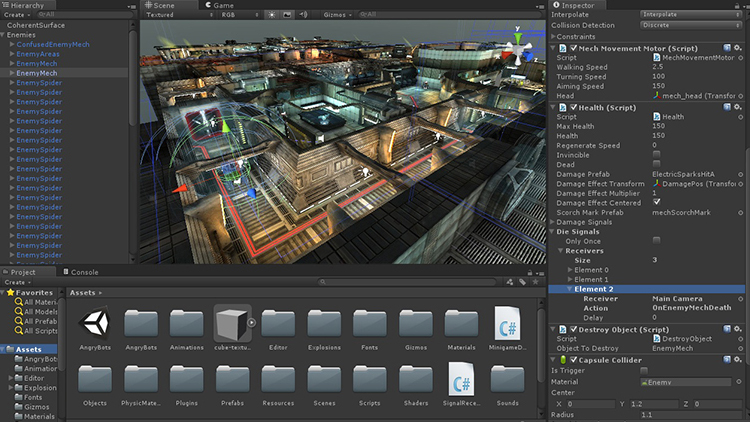Overview of the Game Publishing Process
Publishing your game is the final step in the game development journey, where you share your creation with the world and make it accessible to players. In this chapter, we’ll provide an overview of the game publishing process for different platforms, explore Unity’s build settings and platform-specific considerations, and guide you through the steps to publish your game to web, mobile, or desktop platforms.
Example 1: Setting Up Build Settings
Before publishing your game, configure Unity’s build settings to target your desired platform(s). Navigate to File > Build Settings and select the target platform(s), such as WebGL for web, iOS or Android for mobile, or Windows/Mac/Linux for desktop. Adjust platform-specific settings, such as resolution, aspect ratio, and graphics quality, to optimize performance and compatibility.
Example 2: Building for Web
Publishing your game to the web allows players to access it directly through a web browser without downloading or installing any files. Build your game for WebGL by selecting WebGL in Unity’s build settings and clicking Build. Upload the generated WebGL files to a web server or hosting platform to make your game accessible online.
Example 3: Publishing to Mobile Platforms
Publishing your game to mobile platforms like iOS and Android expands your reach to millions of smartphone and tablet users. Configure Unity’s build settings for iOS or Android, including platform-specific requirements like app icons, permissions, and signing keys. Build your game for the target platform and submit it to the respective app stores, such as the Apple App Store or Google Play Store, following their submission guidelines and requirements.
Example 4: Submitting to Desktop Platforms
Publishing your game to desktop platforms like Windows, macOS, and Linux allows players to download and install your game on their computers. Configure Unity’s build settings for the target platform(s) and build your game accordingly. Distribute your game through digital distribution platforms like Steam, itch.io, or the Mac App Store, or directly from your website.
Example 5: Optimizing for Performance and Compatibility
Optimize your game for performance and compatibility across different platforms and devices. Test your game on various devices and hardware configurations to ensure smooth gameplay and consistent performance. Adjust graphics settings, resolution, and other parameters to balance visual quality with performance on lower-end devices.
Example 6: Implementing Platform-Specific Features
Take advantage of platform-specific features and capabilities to enhance your game’s functionality and user experience. Implement features like touch controls, accelerometer input, or device-specific APIs for mobile platforms. Utilize platform-specific SDKs and plugins to integrate social features, in-app purchases, or advertising networks into your game.
Example 7: Testing and Debugging for Each Platform
Test your game thoroughly on each target platform to identify and resolve platform-specific bugs and issues. Use device emulators, simulators, or physical devices to replicate real-world conditions and user scenarios. Debug platform-specific errors and performance issues using platform-specific debugging tools and techniques.
Example 8: Localizing Your Game for Different Markets
Localization is the process of adapting your game to different languages and regions to make it accessible to a global audience. Translate in-game text, dialogues, menus, and instructions into multiple languages to accommodate players from different regions. Consider cultural differences and preferences when localizing content and design elements.
Example 9: Marketing and Promotion Strategies
Promote your game through marketing and promotional efforts to attract players and generate interest and buzz. Create a compelling trailer, screenshots, and promotional materials to showcase your game’s features and highlights. Utilize social media, press releases, and community engagement to reach out to potential players and influencers.
Example 10: Monitoring Performance and Feedback
Monitor your game’s performance and gather feedback from players after launch to track its success and identify areas for improvement. Analyze metrics like downloads, user retention, and player engagement to evaluate your game’s performance and inform future updates and enhancements. Listen to player feedback and reviews to understand their experiences and address any issues or concerns.
By following these steps and examples, you’ll navigate the game publishing process with confidence and successfully launch your game across multiple platforms. Each platform presents unique challenges and opportunities, so adapt your approach and strategies accordingly to maximize your game’s reach and impact. With dedication, perseverance, and creativity, you’ll publish your game and share it with players around the world.

Leave a Reply